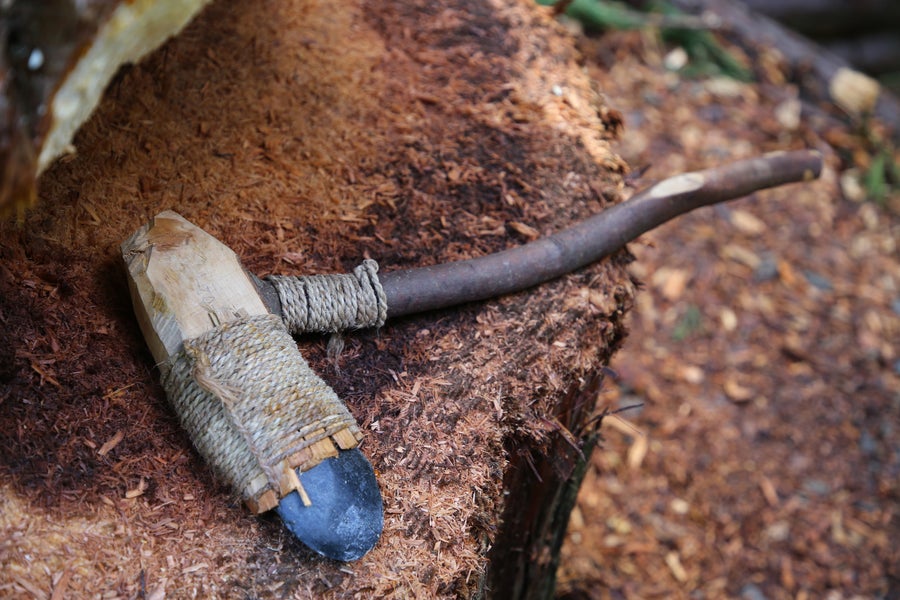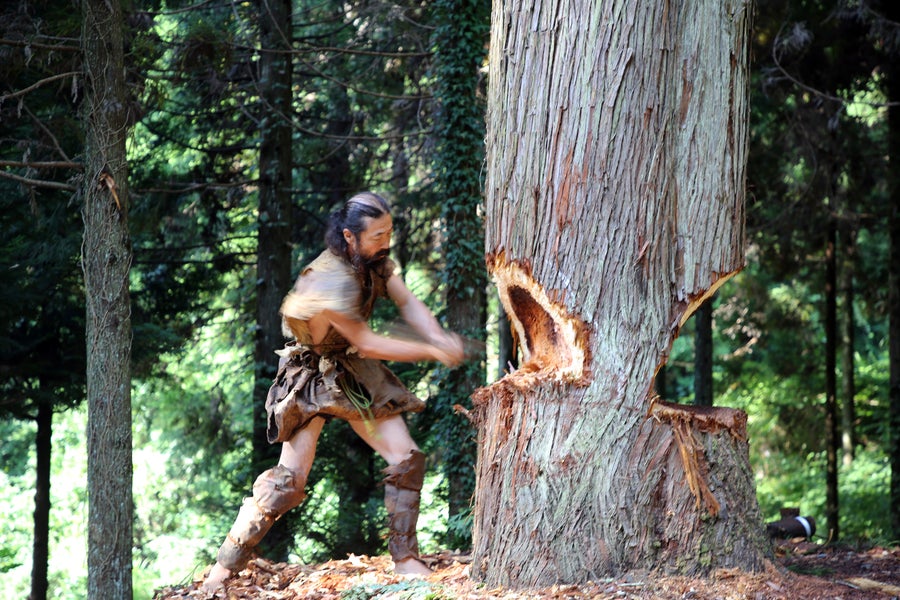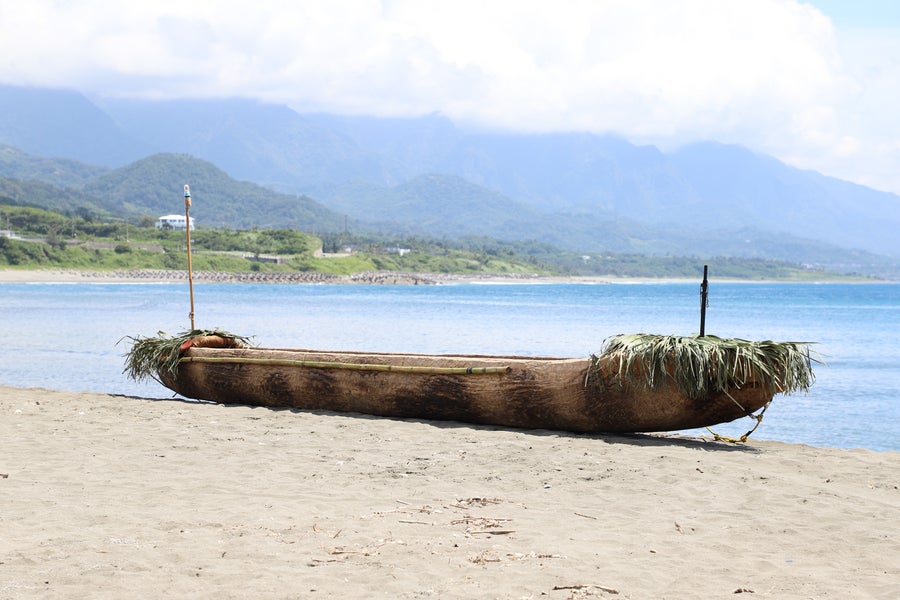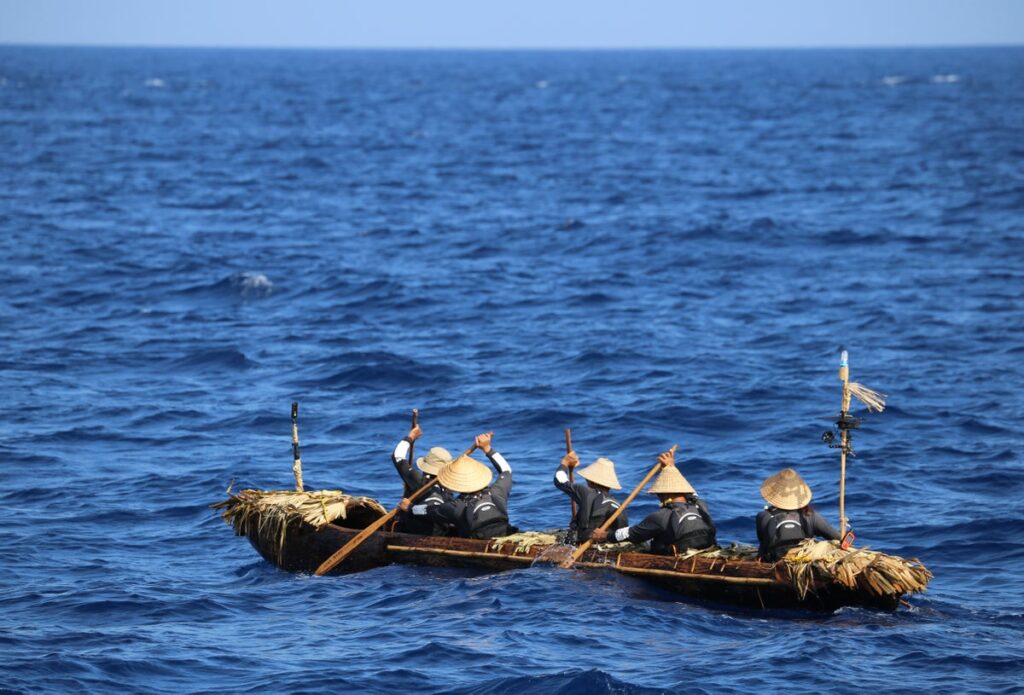Scientists Used Prehistoric Tools to Build a Canoe, Then Paddled Across 140 Miles from Taiwan to Japan
Researchers and expert seafarers teamed up to re-create an ocean journey from more than 30,000 years ago
Expert paddlers in the dugout canoe recreating the ancient journey from Taiwan to the Ryuku Islands.
More than 30,000 years ago, seafaring humans made a momentous trek from present-day Taiwan to the Ryukyu Islands of southwestern Japan—a journey of some 140 miles without any of the advanced technology that guides us today. Though Paleolithic sites on these islands contain remnants of human life from that era—including stone tools, fishhooks and hearths—they give very few clues to the boat technology of the time, likely because it relied heavily on quick-to-decay organic matter.
For a new study, published on Wednesday in Science Advances, researchers reenacted that treacherous journey over three days on a boat constructed with stone tools from the period. “Before our project, no one had seriously considered how this maritime migration occurred,” says the study’s lead author Yousuke Kaifu, an anthropologist at the University of Tokyo.
Years ago Kaifu gathered a team of researchers to test out possible boat designs early modern humans could have used. The team first tested reed-bundle rafts and bamboo rafts, but the vessels were too slow and were easily knocked off course by the very strong currents of the area. So the researchers next decided to try a simple canoe like those known to have been used in the area about 10,000 years ago. They chopped down a three-foot-thick Japanese cedar tree using stone axes with wooden handles, dug out the inside and shaped it into a 25-foot-long canoe that became known as “Sugime,” a nickname that incorporates the Japanese word for cedar.
On supporting science journalism
If you’re enjoying this article, consider supporting our award-winning journalism by subscribing. By purchasing a subscription you are helping to ensure the future of impactful stories about the discoveries and ideas shaping our world today.

One of the stone axes built like those in prehistoric times that was used to fell the tree to make the canoe.
In July 2019, after two weeks of waiting for calm waters, five experienced paddlers embarked on their journey without using modern navigational tools. They soon encountered choppy seas and later struggled with sleepiness and bodily discomfort. With no GPS, the team relied on the sun, stars and other indicators of its direction. Forty-five hours and 140 miles after it started, Sugime at last arrived at the closest of the Ryukyu Islands.
Although the dugout canoe was the best of the team’s candidate boats, it was far from perfect—it constantly took on water, which one of the paddlers had to frequently bail out. “I would of course love to see other researchers test other watercraft for deeper understanding of how our ancestors first ventured into the sea,” Kaifu says.

The cutting of the Japanese cedar tree to make the dugout canoe.
The reenactment helped illustrate just how skilled and coordinated the original seafarers would have needed to be to pull off such a voyage. “I enjoyed the project throughout because there were some new discoveries almost every day,” Kaifu says.
This effort has continued a global trend of experimental archaeological boat reconstructions. One group replicated a bamboo raft from more than 800,000 years ago and used it to travel between Indonesian islands. Another team reconstructed remnants of eighth-century-C.E. boats to test on the Charente River in France.

The finished dugout canoe before departure, with leaf wave guards at the bow (right) and stern (left). Vertical sticks at bow and stern are for a camera and a stern light, respectively. The rope at the bow is for towing.
“There’s also a massive resurgence of Indigenous seafaring voyaging and experimental voyaging in the Pacific, which is really interesting at the moment,” says Helen Farr, a maritime archaeologist at the University of Southampton in England and co-host of the archaeology-focused podcast Before Us, who was not involved in the study. “Indigenous communities are reclaiming their maritime heritage through these voyaging societies.”
These and other experimental archaeological projects can help illuminate parts of human migration that have been lost history. “You suddenly see a level of skill and planning that is really hard to see in the archaeological record for this time period,” which mostly consists of fossils and stone tools, Farr says. “So to get an insight into an activity—a temporal, spatial, specific activity like seafaring in this region—and just the little human details that you get from it, that’s what is a real, real joy.”


